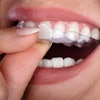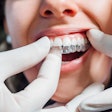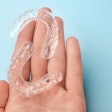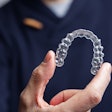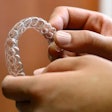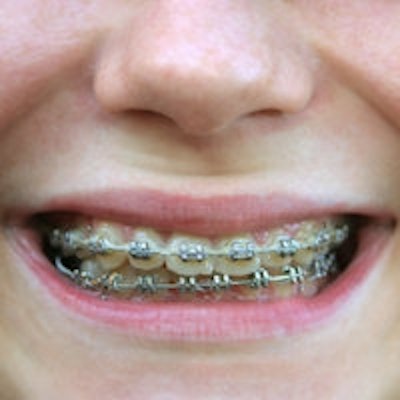
If the results of an intraoral full-arch scan were as accurate as those from a plaster model, which would you use?
Researchers from South Korea addressed this question of accuracy in a new study published online June 15 in PLOS One. They found no significant differences between plaster models and intraoral scans, except for one measurement of lower intermolar width.
"The results of the present study indicate that the intraoral scans are clinically acceptable for diagnosis and treatment planning in dentistry and can be used in place of plaster models," wrote Fan Zhang, Kyung-Jin Suh, and Kyung-Min Lee from the orthodontics department at Chonnam National University in Gwangju.
Full-arch scans
Making full-mouth impressions can be a difficult process for the dental team and for the patient. For patients, the process involves having the tray and material in their mouth and stable until the impression material has set.
For the dentist, those patients with a gag reflex, excessive saliva, small mouths, or even a large tongue are all potential difficulties. But the accuracy of these impressions has been considered the standard in practice.
For the current study, the researchers sought to find out if measurements obtained by means of a direct, full-arch intraoral scan were as accurate as those obtained using a plaster model. The group noted that previous studies have been completed in prosthodontics, but not as such for full-arch results.
Zhang and colleagues took an intraoral scan (iTero, Align Technology) of 20 patients' mouths, and these scans were converted into digital models. They also made plaster models of the same patients' mouths.
One researcher took eight transverse and 16 anteroposterior measurements. They recorded 24 tooth heights and widths on the plaster models with a digital caliper. For the intraoral scan, the researchers used 3D reverse engineering software for the measurements. To determine the measurements' validity from the scan compared with the plaster model, the authors used a paired t-test and Bland-Altman plot.
There were no significant differences between the plaster models and intraoral scans, except for one measurement of lower intermolar width. The Bland-Altman plots revealed that the two methods were "within the limits of agreement," according to the authors.
| Tooth height measurements (mm), plaster vs. scan | ||||
| Plaster mean (SD*) | Scan mean (SD) | Difference mean (SD) | p-value | |
| Maxilla | ||||
| Central incisor, right | 9.84 (1.06) | 9.83 (1.04) | 0.01 (0.14) | 0.752 |
| Central incisor, left | 9.85 (0.97) | 9.88 (0.92) | -0.03 (0.18) | 0.523 |
| Lateral incisor, right | 8.29 (0.96) | 8.28 (0.96) | 0.01 (0.17) | 0.893 |
| Lateral incisor, left | 8.61 (1.00) | 8.66 (0.92) | -0.05 (0.14) | 0.162 |
| Mandible | ||||
| Central incisor, right | 7.89 (0.91) | 7.91 (0.97) | -0.02 (0.17) | 0.712 |
| Central incisor, left | 7.82 (0.99) | 7.80 (0.98) | 0.02 (0.22) | 0.676 |
| Lateral incisor, right | 8.10 (0.77) | 8.13 (0.80) | -0.03 (0.12) | 0.367 |
| Lateral incisor, left | 8.15 (0.91) | 8.18 (0.87) | -0.03 (0.15) | 0.434 |
The average surface difference between the two methods was within 0.10 mm, they wrote. The minimum average surface differences were 0.06 mm in the maxilla and 0.07 mm in the mandible, while the maximum average surface differences were 0.13 mm in the maxilla and 0.18 mm in the mandible.
Improving accuracy
Clinicians should keep in mind that scanning distortion might occur in the posterior areas of the mandible, the authors noted.
"In the clinical setting, careful scanning procedures and additional scans of the mandibular posterior areas might improve scanning accuracy," they wrote.
